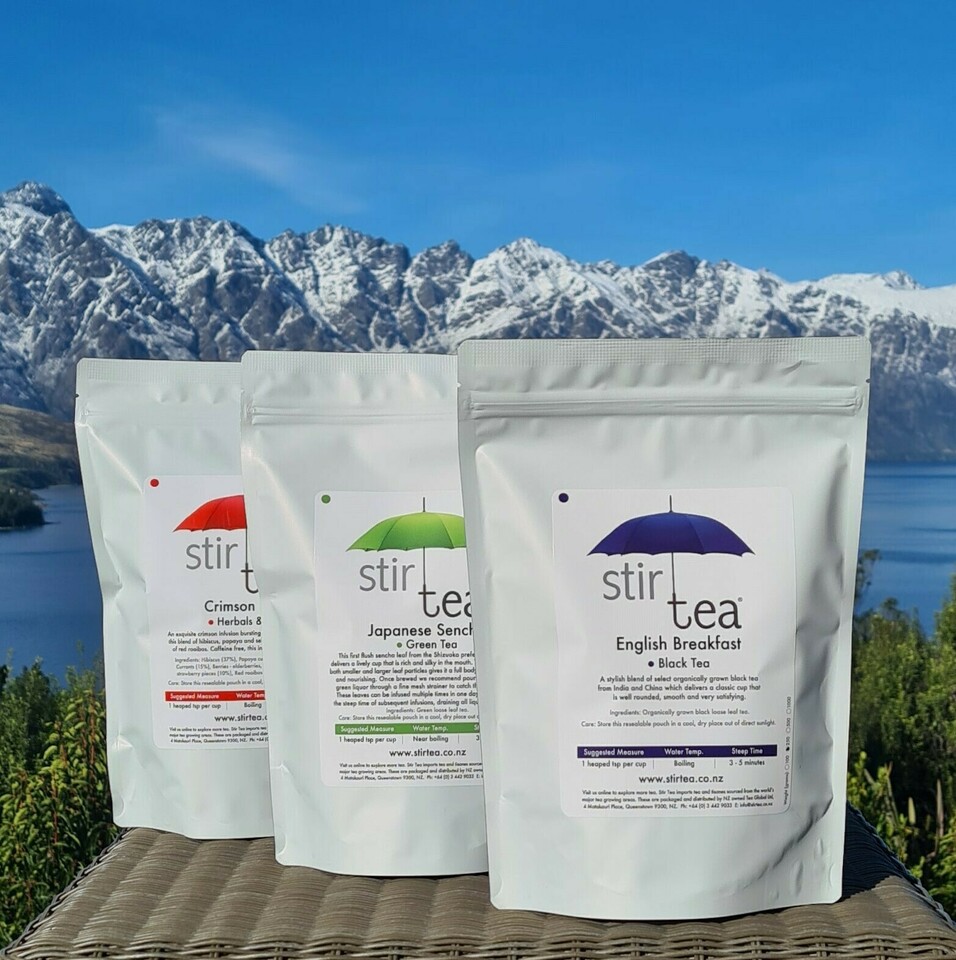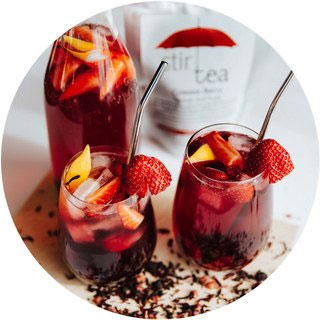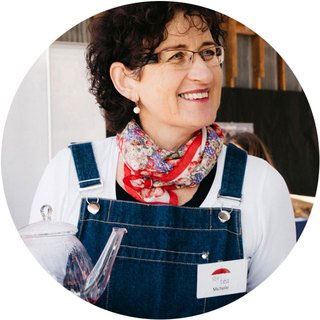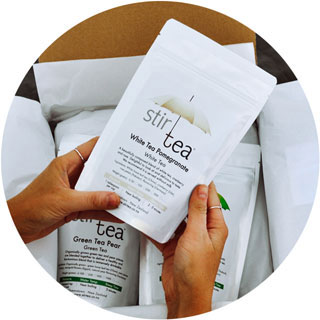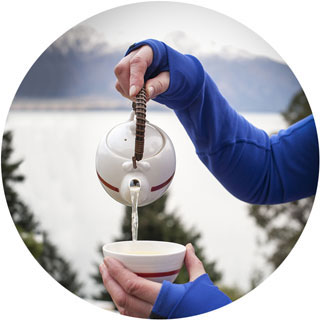You can brew our loose leaf tea using a variety of tea equipment – you will still get a great cup of tea. These include a teapot (in its most simplest form a cup or bowl with a lid on top) where the leaves get to awaken from their sleep and dance in the water or the more contained methods of infuser baskets, spring infusers or the fill your own tea bags which we offer on our tea accessories page.
Each of these methods will work, but there is no doubt in our mind that a free flowing teapot will brew the best cup of tea. This is because you are giving the tea leaves space to breathe and come back to life. Once you have poured the water over the leaves in the pot they will start to unfurl and expand two to five times their dry leaf size. The circulating water will cause the leaves to tumble around, coaxing out all the flavour and goodness from the surface of each leaf. This is in contrast to any tea infusers where the leaves are held in a contained space (no dancing there, more a polite queue).
What is the Best Teapot to Use for Brewing the Perfect Cup of Tea?
Since its creation in China, the teapot has been made in many wonderous materials: bronze, silver, ceramic, porcelain, cast iron and glass are just some examples. Do you remember your grandparents using a highly polished silver teapot when serving afternoon tea? Or perhaps you recall your mother being fearlessly loyal to her Crown Lynn teapot, even with its chipped spout? Over the years, beliefs of what makes a great teapot vary, and this is in part due to the availability of resources and the traditional tea brewing methods you have been exposed to.
In New Zealand traditionally we have adopted the larger sized brewing teapots with a longer initial steep time and fewer number of brews.
In contrast, Eastern countries often prefer smaller brewing vessels filled with more leaves brewed for less time. They may re-brew their small pots multiple times, with each infusion celebrated for its changing aroma, flavour and body.
In China, early teapots were made with Yixing clay, a distinctive red or brown colour which is left unglazed. With its pourous nature it seasons the pot with each brew made. The Yixing clay teapot remains a favourite with tea drinkers across the world today who may have a library of these pots which they rotate their brewing between depending on the particular style of tea.
For the more Western style brewing methods we are used to in New Zealand each teapot type has its own benefits. Ceramic, stoneware and porcelain teapots are traditional in appearance, and are considered the material with the best heat retaining properites which makes them an attractive choice.
Stainless or silver teapots also help the liquid to remain hot, but when touched they can burn skin.
Glass teapots let you see the dance of the tea leaves, but they do lose heat more quickly (in all cases we recommend warming the pot before you brew but most importantly in the case of glass).
Tips On Purchasing a Teapot
If you are purchasing a teapot, then the most important place to start is by considering how many cups of tea are you wanting to make each time. Too often we see people purchasing a bigger volume teapot than they really need, leading to wasted tea and lost heat in the pot.
Consider the handle size and positioning - how does it feel in the hand, is it balanced? The shape of the spout (we always ask to see a teapot pouring before we buy it), how it is best cleaned and whether you want the best cup of tea you get by having the tea leaves dancing in the pot or the convenience of them brewing in an infuser basket.
Our final thoughts:
Personally we really enjoy the added theatre of tea making offered by glass teapots. We can watch the dry leaf coming back to life as it releases goodness into the water colouring it until we stop the process. Using glass though does reinforce the importance of warming the pot before you add your leaves to ensure as little heat is lost in the brewing process. Read our 5 simple Tips to Brew the Perfect Cup of Tea.
If you for practical reasons cannot use a teapot – perhaps the office or on a picnic, then a cup tea infuser or Spring Mesh Tong infuser is a good alternative.
Posted: Thursday 28 March 2019

